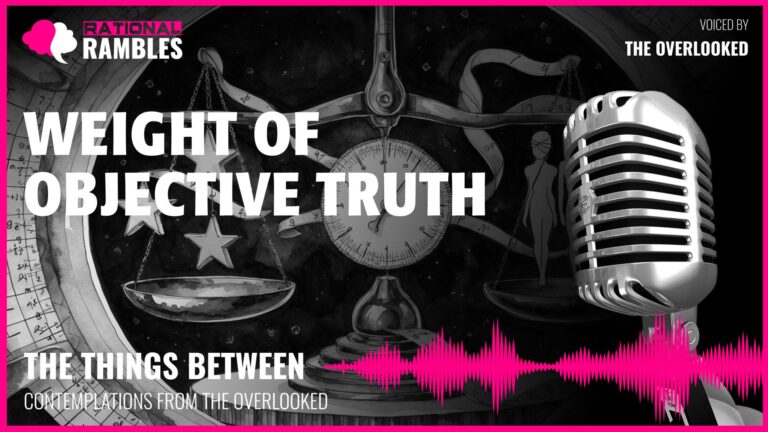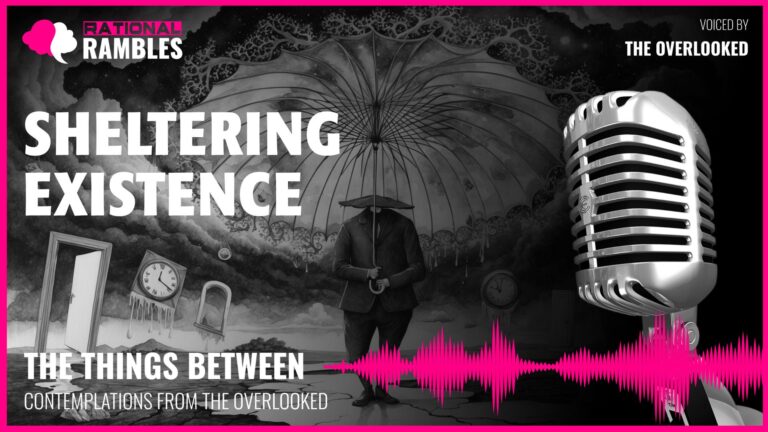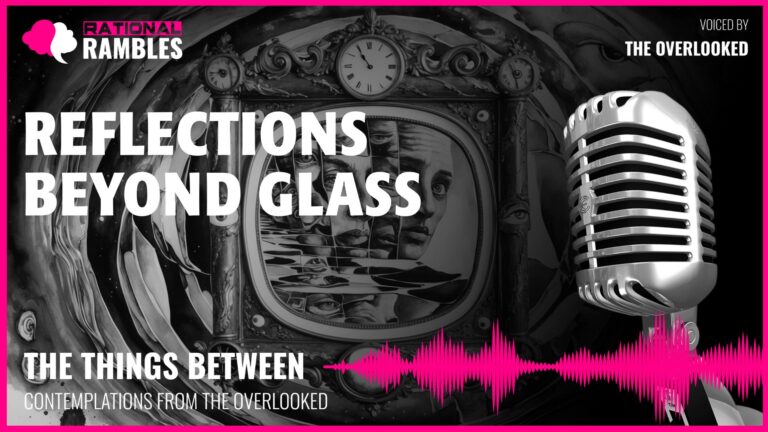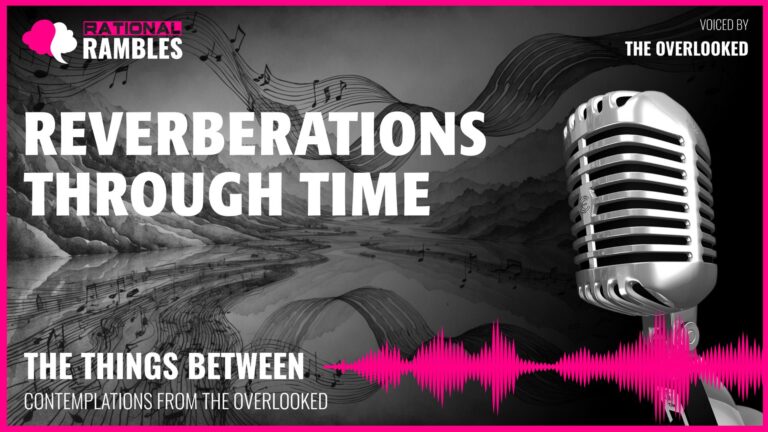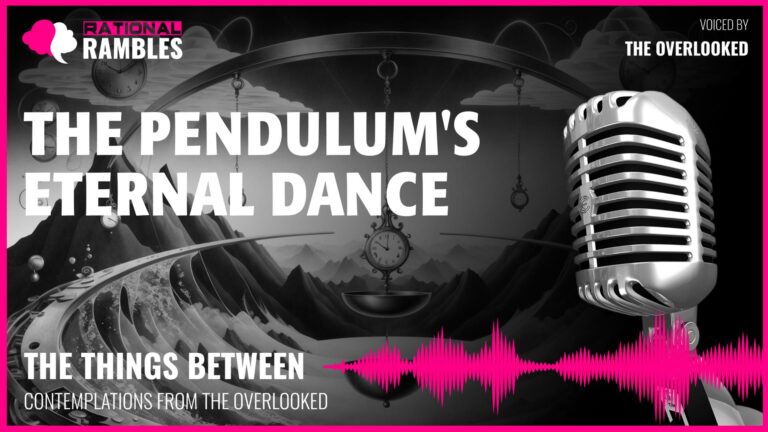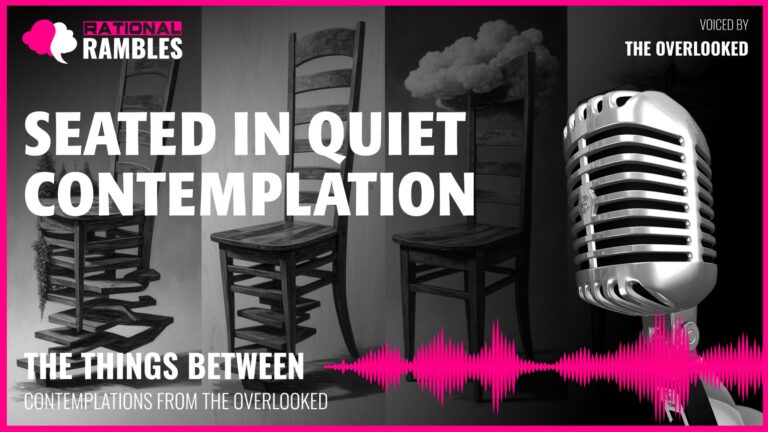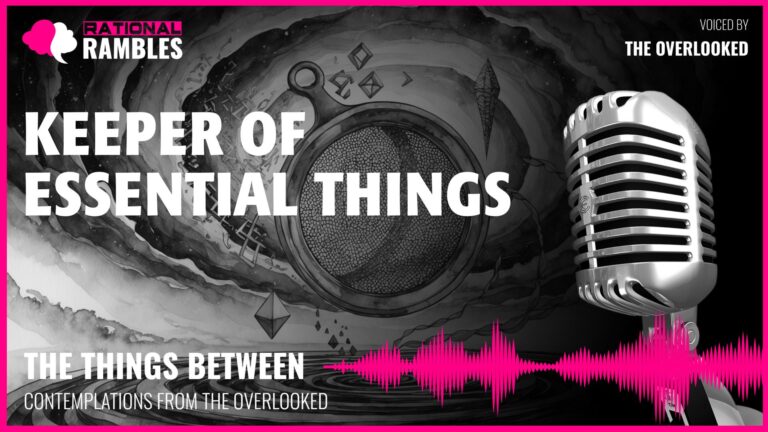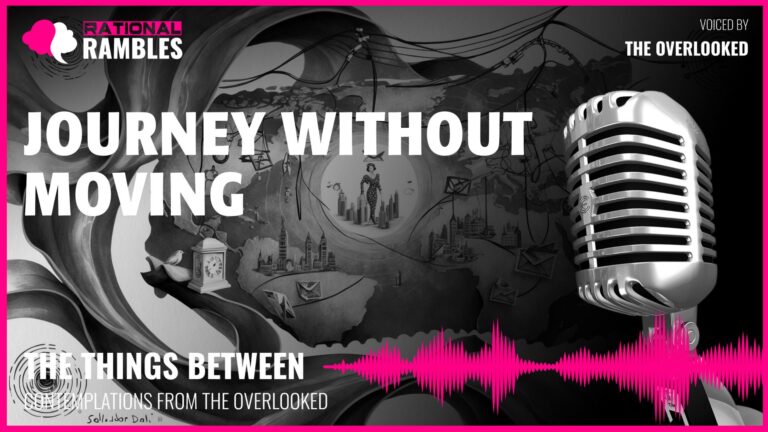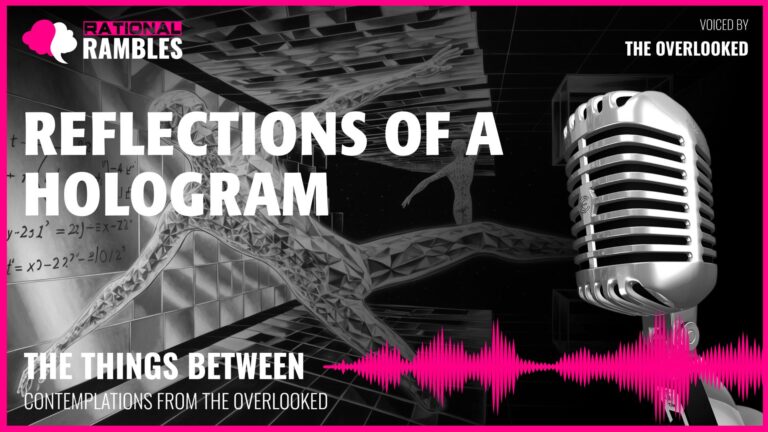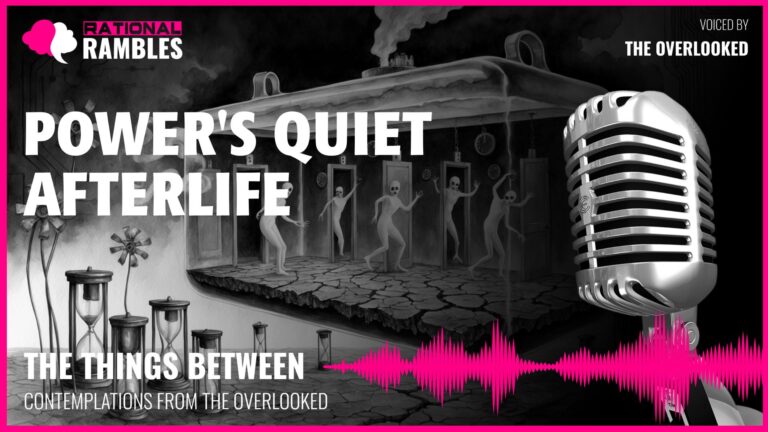Indelible Transformations: The Philosophy of Permanent Marking
Introduction
Beneath the surface of human skin lies a canvas unlike any other—living, responsive, and perpetually changing. The act of marking this canvas permanently represents one of humanity’s most enduring paradoxes: the impermanent being’s quest for permanence. The practice of tattooing transcends mere decoration; it is a profound philosophical engagement with concepts of identity, transformation, pain, and significance. This ancient yet ever-evolving art form invites us to explore fundamental questions about our existence, our bodies, and our relationship with change and permanence.
What drives humans to voluntarily submit to discomfort in pursuit of permanent markings? Why do we seek to externalize our internal narratives, to render visible what is invisible? What does it mean to commit to unchanging marks on ever-changing bodies? These questions reveal tattooing as not merely an aesthetic practice but a rich philosophical territory where notions of self-creation, embodiment, temporality, and meaning converge in fascinating ways.
As we examine the philosophy of permanent marking, we encounter profound tensions between intention and interpretation, between momentary decisions and lifelong consequences, between the individual body and collective cultural meanings. These tensions illuminate broader philosophical concerns about human existence—our desire to leave lasting impressions in an impermanent world, our complex relationship with physical pain, and our ongoing struggle to reconcile who we are with who we are becoming.
The Metaphysics of Marking
At its core, tattooing represents a unique ontological proposition—an alteration that exists simultaneously on the surface and beneath it, both of the body and additional to it. This liminal quality makes tattooing a rich subject for metaphysical inquiry.
Boundary Crossing and Liminality
The tattooing process explicitly negotiates the boundary between outside and inside, between the external world and the internal realm of the body. In philosophical terms, this boundary-crossing represents a profound liminality—the tattoo exists in a threshold state, neither fully external nor completely internal. The penetration of the epidermis with ink creates a permanent mark that resides in the dermis, the second layer of skin, making the tattoo simultaneously visible on the surface yet physically residing beneath it.
This liminality challenges the Cartesian dualism that has long dominated Western philosophical thought—the strict separation between mind and body, between internal consciousness and external materiality. The tattoo refuses such neat categorization. It is a material alteration with psychological significance, an external mark that becomes integrated into one’s internal self-conception.
Philosopher Maurice Merleau-Ponty’s concepts of embodiment offer a useful framework here. For Merleau-Ponty, the body is not merely an object in the world but our primary means of experiencing and understanding the world. The tattooed body represents an intentional modification of this experiential interface—changing not just how others perceive us but how we perceive ourselves and our relationship to the world.
Permanence in Impermanence
The permanence of tattoos creates a fascinating philosophical tension with the impermanence of human existence. Humans, with their finite lives and constantly changing bodies, nonetheless seek through tattooing to create marks that will endure throughout their lifetime. This represents what philosopher Martin Heidegger might recognize as an authentic confrontation with temporality—an acknowledgment of our finite existence coupled with an attempt to create meaning within that finitude.
Yet this permanence is itself relative and contextual. The tattooed mark changes as the body ages—stretching, fading, blurring at the edges. What begins as sharp lines and vivid colors gradually transforms over decades. The tattoo is thus both constant and evolving, embodying the philosophical paradox of identity through change that has puzzled thinkers since Heraclitus observed that one cannot step into the same river twice.
This paradox becomes even more profound when we consider that the tattooed skin will eventually perish with the person. The “permanence” of tattoos is thus circumscribed by mortality itself, making them permanent only within the context of a single human lifetime. This limitation does not diminish their significance but rather heightens it, as it mirrors the fundamental human condition of creating meaning within the constraints of finite existence.
Embodied Narratives
Tattoos transform the body into a text that can be read—though not always transparently. The marked skin becomes a narrative surface, a living document that tells stories of identity, experience, affiliation, and memory. This narrative quality connects tattooing to the philosophical concept of the “narrative self” developed by thinkers like Paul Ricoeur and Alasdair MacIntyre, who argue that human identity is constituted through the stories we tell about ourselves.
The tattoo represents a particular kind of story—one that is deliberately chosen and permanently inscribed. Unlike verbal narratives that can be revised or reinterpreted, the tattooed narrative has a physical permanence that commits the bearer to its continued presence, even as its meaning may evolve. This creates what philosopher Charles Taylor might recognize as a “strong evaluation”—a defining commitment that shapes one’s identity and values.
Yet the interpretability of these narratives remains open and evolving. A tattoo created with one meaning may acquire different significance as the person’s life circumstances change. What was once a lover’s name becomes a reminder of loss; what was once a youthful declaration of rebellion becomes a mark of a former self. The philosophical implication is profound: meaning is not fixed at the moment of creation but remains in dialogue with ongoing experience.
Pain, Transformation, and Meaning
The relationship between pain and meaning represents one of the most profound philosophical dimensions of tattooing. Unlike most aesthetic practices, tattooing necessarily involves physical discomfort—an unusual circumstance in which people willingly submit to pain in pursuit of beauty or meaning.
Voluntary Suffering and Value Creation
The voluntary nature of tattoo pain raises fundamental questions about the relationship between suffering and value. Why do humans choose pain in this context? The answer seems to lie partly in the connection between sacrifice and significance. That which is obtained without cost is often valued accordingly, while that which requires endurance carries greater weight in our personal mythology.
This insight resonates with philosophical traditions ranging from Nietzsche’s concept of self-overcoming to Buddhist perspectives on suffering. Friedrich Nietzsche proposed that struggle and pain are essential components of personal growth and the creation of meaning. In The Gay Science, he writes: “What if pleasure and displeasure were so tied together that whoever wanted to have as much as possible of one must also have as much as possible of the other[?]” The tattoo embraces this intertwining, recognizing pain as the necessary precursor to the desired transformation.
Similarly, Buddhist philosophy acknowledges suffering (dukkha) as an inherent aspect of existence but suggests that our relationship to suffering determines its impact on us. The tattoo process represents a controlled engagement with pain—one that is chosen, temporary, and directed toward a specific outcome. This controlled suffering differs fundamentally from unwanted or purposeless pain, suggesting that context and intention transform the meaning of physical discomfort.
Rites of Passage and Transformative Pain
Across cultures and throughout history, painful body modifications have been associated with rites of passage—ceremonial transitions from one social status to another. Anthropologist Arnold van Gennep identified three phases in such rites: separation, liminality, and reincorporation. The tattooing process mirrors this structure: the individual separates from their unmarked state, passes through the liminal phase of the tattooing process (which includes pain), and is reincorporated into society with a transformed body and identity.
This transformative function of ritualized pain has been examined by philosopher Elaine Scarry, who argues in The Body in Pain that physical suffering has the power to unmake and remake our world. Pain temporarily narrows consciousness to the immediate sensation, creating a kind of dissolution of the normal self. When the pain subsides, the person emerges altered—not just physically but psychologically. The “tattoo high” often reported by recipients may represent this psychological reintegration, a state of euphoria that follows the successful navigation of voluntary discomfort.
In this context, tattoo pain functions not as something merely to be endured but as an essential component of the transformative experience. The discomfort serves as both threshold and catalyst—marking the boundary between the former and future self and providing the transformative means through which one state becomes another.
Pain as Authentication
The unavoidable pain of tattooing also serves as a kind of authentication mechanism, ensuring that the commitment to the mark is genuine. In a culture increasingly characterized by convenience and comfort, the willingness to endure discomfort signals serious intention. The pain becomes a test of resolve, separating casual desire from committed purpose.
This authenticating function connects tattooing to existentialist conceptions of commitment. Jean-Paul Sartre emphasized that authentic choices require full acknowledgment of their consequences. The pain of tattooing forces such acknowledgment—one cannot remain distant or theoretical about a process that demands physical endurance. The discomfort ensures presence and attention, creating what philosopher Albert Borgmann might call a “focal practice”—an activity that demands our full engagement rather than passive consumption.
The philosophical implication extends beyond tattooing to broader questions about meaning creation. Does significant meaning require some form of cost or sacrifice? Does commitment necessarily entail discomfort? The tattoo suggests that meaningful transformation often requires a willingness to endure transitional discomfort—a principle that applies not just to body modification but to personal growth, relationship building, and social change.
Identity, Selfhood, and Embodiment
Perhaps no philosophical dimension of tattooing is more profound than its relationship to identity and selfhood. The tattoo represents a deliberate intervention in the process of identity formation—a conscious choice to alter one’s physical presentation in ways that reflect, create, or transform one’s sense of self.
The Body as Project
Contemporary philosophy has increasingly recognized the body not as a fixed biological given but as a site of ongoing construction and interpretation. Feminist philosopher Judith Butler’s concept of performativity suggests that bodily identity is not predetermined but constructed through repeated acts and practices. The tattoo represents a particularly explicit form of this bodily construction—a deliberate modification that participates in the ongoing project of selfhood.
Sociologist Anthony Giddens describes the “reflexive project of the self” in modernity—the process by which individuals continuously revise their self-narrative in response to changing circumstances. The tattoo can be understood as a material manifestation of this reflexivity, a physical inscription of one’s evolving self-conception. Unlike temporary forms of self-presentation such as clothing or hairstyles, the tattoo represents a more permanent commitment to a particular aspect of identity.
This permanence creates what philosopher Peter Sloterdijk might recognize as a “anthropotechnic practice”—a technique through which humans deliberately shape themselves. The tattooed person engages in a form of self-creation that combines aesthetic judgment, narrative construction, and physical transformation in a single act. They become simultaneously the artist and the artwork, the creator and the created.
External Marks and Internal Transformation
A fundamental philosophical question emerges from the practice of tattooing: Can transformation of the exterior catalyze transformation of the interior? Can changing how we appear change who we are? The experience of many tattooed individuals suggests that it can, revealing a complex interplay between physical marking and psychological identification.
This interplay challenges simplistic distinctions between “authentic” inner identity and “superficial” external appearance. The tattoo suggests instead that identity exists in the continuous dialogue between interior experience and exterior expression. As philosopher Charles Taylor argues, identity is not formed in isolation but through “webs of interlocution”—ongoing conversations with others and with cultural meanings. The tattoo participates in these conversations, making claims about the self that are then reinforced through social recognition.
Moreover, the permanence of tattoos creates a unique form of self-accountability. By marking the body in ways that cannot be easily revoked, the tattooed person commits to a particular self-conception or value. Philosopher Christine Korsgaard’s work on self-constitution suggests that such commitments are central to identity formation—we become ourselves through the values and principles to which we bind ourselves. The tattoo represents a particularly concrete form of this binding, a physical commitment to continued identification with certain aspects of selfhood.
Memory, Continuity, and Identity Through Time
One of the most common motivations for tattooing is commemoration—marking significant experiences, relationships, or transitions. These memorial tattoos address one of philosophy’s most enduring questions: how does personal identity persist through time and change? Philosopher John Locke proposed that personal identity consists primarily in psychological continuity, particularly the continuity of memory. The commemorative tattoo externalizes this memory function, creating a permanent physical reminder that supplements the potentially fallible psychological memory.
The tattooed mark serves as what philosopher Andy Clark might call a form of “extended cognition”—an external resource that participates in cognitive processes usually considered internal. The memorial tattoo doesn’t just represent a memory; it actively participates in remembering, triggering recollection through its continued physical presence. This suggests a conception of identity that extends beyond the boundaries of the mind to include intentionally modified aspects of the body.
Yet the relationship between tattoos and temporal identity is not limited to commemoration. Aspirational tattoos—those that represent who one wishes to become rather than who one has been—engage with the future-oriented dimension of identity. Philosopher Martin Heidegger emphasized that human existence is characterized by projection into possibilities—we define ourselves not just by our past but by the future toward which we direct ourselves. The aspirational tattoo materializes this projection, creating a physical commitment to a potential future self.
The Ethics of Permanent Marking
The permanence of tattoos raises distinctive ethical questions about responsibility, autonomy, and the relationship between momentary choices and enduring consequences. These ethical dimensions extend beyond individual decisions to broader questions about modification of the body, cultural appropriation, and the social meanings of marked skin.
Autonomy and Future Selves
One of the most challenging ethical aspects of tattooing concerns our responsibility to our future selves. When we choose a permanent mark, we make a decision that our future self must live with, potentially for decades. This creates what philosopher Derek Parfit might recognize as a question of “psychological connectedness” between present and future selves. To what extent should the present self constrain the options of the future self?
This question becomes particularly acute given that values, aesthetics, and identifications often change throughout a lifetime. The tattoo that perfectly expresses one’s 20-year-old self may not align with one’s 50-year-old self, yet both must inhabit the same marked body. This creates a unique form of what philosopher L.A. Paul calls a “transformative experience”—a decision that potentially changes not just one’s circumstances but one’s values and preferences in ways that cannot be fully anticipated.
The ethical framework of autonomy, dominant in contemporary bioethics, emphasizes informed consent and self-determination. This framework suggests that respecting the autonomy of individuals includes respecting their right to make permanent modifications to their bodies, even if others might question the wisdom of those modifications. However, it also suggests an obligation to ensure that such decisions are made with full awareness of their permanence and with the capacity to weigh long-term consequences.
Cultural Appropriation and Respectful Engagement
Many tattoo traditions emerge from specific cultural contexts where designs, techniques, and placements carry profound cultural and spiritual significance. The globalization of tattooing raises ethical questions about cultural appropriation—the adoption of elements from a culture by members of a different culture, particularly in contexts of unequal power relations.
Philosopher James O. Young distinguishes between “content appropriation” (taking the content of artistic works) and “subject appropriation” (representing the experiences of others). Both forms can occur in tattooing when symbols, designs, or techniques are removed from their original context and meaning. This raises ethical questions about respect, acknowledgment, and the potential harm of decontextualizing culturally significant practices.
The ethics of cultural engagement in tattooing requires navigating between problematic extremes. On one hand, treating all cultural traditions as freely available for individual use risks disrespecting their significance and perpetuating historical patterns of cultural exploitation. On the other hand, rigid notions of cultural ownership can reify cultural boundaries and deny the long history of intercultural exchange in body modification practices.
A more nuanced approach emphasizes informed engagement, acknowledgment of origins, respect for restricted symbols, and reciprocal relationships with cultural traditions. This approach recognizes that ethical cross-cultural tattooing requires not just aesthetic appreciation but meaningful understanding of context and significance.
Professional Ethics and Responsibility
The tattoo artist occupies a unique ethical position as both artisan and modifier of human bodies. This dual role creates distinctive professional responsibilities that exceed those of artists working in non-bodily media. Beyond technical skill and artistic vision, the tattoo artist must consider questions of safety, appropriateness, and long-term consequences.
Philosophical frameworks of professional ethics, such as those developed by Edmund Pellegrino for medicine, can be adapted to the tattooing context. These frameworks emphasize the fiduciary relationship between practitioner and client—a relationship characterized by trust, vulnerability, and an imbalance of specialized knowledge. The tattoo artist has obligations not just to execute the client’s wishes but to provide guidance based on technical expertise and experience with long-term outcomes.
This guidance may sometimes require refusing certain requests—extremely visible tattoos for young clients just entering the workforce, hateful or discriminatory imagery, or designs likely to age poorly. Such refusals represent not paternalism but professional judgment about harm prevention and long-term wellbeing. The ethical tattoo artist balances respect for client autonomy with professional responsibility, recognizing that the permanence of their work creates distinctive obligations.
Social and Cultural Dimensions
Tattooing exists not just as an individual practice but within complex social and cultural contexts that shape its meanings and significance. The philosophical examination of tattooing must therefore extend beyond individual experience to consider its role in social identity, cultural expression, and historical transformation.
Stigma, Acceptance, and the Social Gaze
Throughout history, tattoos have functioned as powerful social signifiers, marking boundaries between inclusion and exclusion. From the punitive tattoos of ancient Rome to the subcultural markers of 20th century counterculture, marked skin has been read as an index of social position. This history raises philosophical questions about stigma, deviance, and the process through which bodily modifications acquire social meaning.
Sociologist Erving Goffman’s work on stigma offers insight into how visible differences become socially significant. For Goffman, stigma represents a discrepancy between “virtual social identity” (expectations about who a person should be) and “actual social identity” (the attributes they actually possess). Historically, visible tattoos created such a discrepancy, marking individuals as deviant from mainstream expectations of unmarked skin.
The contemporary mainstreaming of tattooing represents a fascinating shift in this stigmatization process. What was once a mark of deviance has, in many contexts, become a mark of creative self-expression. This transformation illustrates philosopher Michel Foucault’s insight that bodies are sites of shifting power relations and changing social norms. The increasingly acceptance of tattoos represents not just changing aesthetics but a broader renegotiation of bodily autonomy and self-determination.
Yet this acceptance remains partial and contextual. Tattoos in certain locations (face, hands) or of certain styles continue to carry stronger social consequences than others. This uneven acceptance reveals the persistence of what philosopher Pierre Bourdieu calls “symbolic violence”—the imposition of systems of meaning that perpetuate social hierarchies. The business executive whose traditional Japanese sleeve remains hidden beneath a dress shirt navigates different symbolic terrain than the service worker with facial tattoos.
Countercultural Resistance and Assimilation
Tattooing has long served as a vehicle for countercultural resistance—a means of visibly rejecting dominant social norms and affiliating with alternative communities. This resistance function connects tattooing to philosophical traditions concerned with authenticity and critique, from the Cynics of ancient Greece to the existentialists of the 20th century. The voluntary adoption of a stigmatized bodily state can represent what philosopher Albert Camus might recognize as a form of rebellion—a refusal to comply with unjustified social constraints.
Yet as tattooing has become increasingly mainstream, its countercultural potency has been complicated by processes of commodification and assimilation. What philosopher Theodor Adorno identified as the “culture industry” has incorporated tattooing into consumer culture, potentially neutralizing its resistant qualities. The mass-produced flash design chosen from a catalog may function differently as a social statement than the hand-poked mark created in explicitly resistant contexts.
This tension between resistance and assimilation reveals broader philosophical questions about the possibility of authentic opposition within consumer capitalism. Can permanent bodily modification retain its countercultural significance when incorporated into mainstream aesthetics? Does the commercial tattooing industry represent the co-optation of resistance or the democratization of bodily autonomy? These questions connect tattooing to ongoing philosophical debates about agency and structure in contemporary society.
Community, Belonging, and Shared Marking
Beyond individual expression, tattoos frequently function as markers of community membership and shared identity. From traditional tribal markings to contemporary subcultural signifiers, tattoos create visible bonds between individuals who share values, experiences, or affiliations. This community-forming function engages with philosophical questions about belonging, recognition, and collective identity.
Philosopher Charles Taylor argues that identity is fundamentally dialogical—formed through recognition by others. The shared tattoo creates a particular form of this recognition, a visible acknowledgment of common ground. This can be observed in contexts ranging from military unit tattoos that commemorate shared service to recovery symbols that mark successful navigation of addiction or illness. Such markings create what philosopher Hannah Arendt might recognize as a form of “plurality”—the condition of being distinct but connected to others.
The philosophical significance of these community markings extends beyond social bonding to questions of narrative and meaning. Shared tattoos often connect individual stories to collective ones, placing personal experience within broader contexts of meaning. The Holocaust survivor’s identification number, reclaimed as an act of memory and resistance, connects individual suffering to historical atrocity. The indigenous person’s traditional marking reconnects personal identity to cultural heritage after colonial disruption. These connections illustrate philosopher Alasdair MacIntyre’s insight that meaningful human life requires embedding individual narratives within larger traditions.
Aesthetics and Embodied Art
As an art form, tattooing raises distinctive philosophical questions about aesthetics, embodiment, and the relationship between artist, artwork, and audience. Unlike conventional art objects, tattoos exist on and within living bodies, creating unique considerations regarding permanence, transformation, and lived experience.
The Body as Canvas: Problems and Possibilities
Traditional aesthetics has primarily concerned itself with art objects that exist independently of human bodies. The tattoo challenges this framework by creating art that is inseparable from embodied existence. This integration raises fundamental questions about the nature of the artwork itself. Is the tattoo the design, the marked skin, or some combination of the two? Does the artwork include the entire person, or can it be considered in isolation?
Philosopher Maurice Merleau-Ponty’s concept of the “flesh” offers insight here. For Merleau-Ponty, the body is not merely an object but the very means through which we experience the world. The tattooed body represents a unique aesthetic situation in which the “canvas” is simultaneously the living subject who experiences the artwork from within. This dual status creates what philosopher Arnold Berleant calls an “aesthetic field”—a total situation that includes the physical marking, the embodied experience, and the social context of viewing.
This embodied quality creates both limitations and possibilities. The tattoo must accommodate the body’s contours, movements, and changes over time. It exists in relation to other bodily features and modifications. It experiences the aging process alongside its bearer. Yet these very constraints can generate distinctive aesthetic qualities unavailable to conventional art forms—the integration with living form, the animation through bodily movement, the gradual transformation through living processes.
Permanence, Impermanence, and Aesthetic Value
The relative permanence of tattoos creates a distinctive temporality that challenges conventional understanding of artistic objects. Unlike paintings that can be repainted or sculptures that can be recast, the tattoo allows for limited revision or correction. This constraint heightens the stakes of the artistic process and creates what philosopher Nicholas Wolterstorff might recognize as an “aesthetic severity”—a rigorous commitment to the integrity of the initial creation.
Yet despite this permanence, tattoos are not static objects. They change as bodies change—stretching with weight gain, wrinkling with age, fading with sun exposure. This inevitable transformation engages with Japanese aesthetic concepts like wabi-sabi, which finds beauty in impermanence and imperfection. The aging tattoo potentially embodies what philosopher Yuriko Saito describes as the “aesthetic appreciation of the transient”—a recognition of beauty in processes of change rather than fixed states of perfection.
This tension between permanence and change raises philosophical questions about when a tattoo is “complete.” Unlike conventional artworks that reach a finished state, the tattoo continues to evolve throughout its existence. This ongoing transformation suggests an aesthetic that values becoming as much as being, process as much as product. The philosophical implication extends beyond tattooing to broader questions about how we value art that changes—whether through intentional interaction, environmental factors, or the passage of time.
Authorship, Collaboration, and Embodied Agency
The creation of a tattoo typically involves collaboration between artist and client, raising philosophical questions about authorship and creative agency. Unlike the conventional model of the autonomous artist creating for an anonymous audience, the tattoo emerges from dialogue between the person who designs and executes the mark and the person who will embody it permanently.
This collaborative process challenges traditional aesthetic theories that emphasize the singular creative genius. Instead, it suggests what philosopher Hans-Georg Gadamer describes as a “fusion of horizons”—a meeting of different perspectives and intentions that produces something beyond what either party could create alone. The tattoo artist contributes technical expertise and aesthetic judgment, while the client contributes personal narrative and embodied context. The resulting artwork belongs fully to neither yet connects both.
The collaborative nature of tattooing also raises questions about consent and bodily agency that extend beyond conventional art ethics. The tattoo client surrenders temporary control over their body while retaining ultimate authority over the permanent result. This dynamic creates what philosopher Susan Bordo might recognize as a negotiation of embodied agency—a process through which individuals exercise control over their bodies within constraints of physical necessity and social meaning.
The philosophical significance of this negotiation extends to broader questions about authorship in the context of embodied art. If the meaning and appearance of the tattoo continue to evolve through the client’s ongoing embodiment, who “authors” these evolving meanings? If the tattoo gains significance through the life lived by the marked person, does this living constitute a form of ongoing artistic creation? These questions suggest an expanded conception of authorship that acknowledges the continuing agency of those who carry art within and upon their bodies.
Historical and Cross-Cultural Perspectives
The practice of permanent body marking appears across human cultures and throughout recorded history, suggesting that the impulse to modify the body through permanent markings may be a near-universal human phenomenon. These diverse traditions offer rich philosophical insights when considered in their cultural and historical contexts.
Ancient Practices and Enduring Meanings
Archaeological evidence confirms that tattooing is among humanity’s oldest continuous cultural practices, dating back at least 5,000 years. The discovery of tattooed mummies from ancient Egypt, alpine Europe, and numerous indigenous cultures demonstrates that the desire to mark the skin permanently transcends particular cultural moments. This historical depth raises philosophical questions about enduring human needs and expressions that persist despite radical changes in technology, social organization, and belief systems.
Philosopher Hans-Georg Gadamer’s concept of “effective history” suggests that ancient practices continue to shape contemporary understanding, even when their original contexts have been lost. The modern tattoo exists in dialogue with this long history—sometimes explicitly, as in the revival of traditional techniques, and sometimes implicitly, as in the persistent connection between marking and identity. This historical dimension reveals tattooing as what philosopher Alasdair MacIntyre might call a “practice with a history”—an activity whose standards of excellence and internal goods have evolved through generations of practitioners.
The diverse purposes of ancient tattooing—from therapeutic marking in ancient Egypt to status indication in Polynesian cultures to religious devotion in pilgrimage tattoos—reveal the remarkable adaptability of permanent marking to various human needs. This adaptability suggests that philosopher John Dewey’s pragmatic aesthetics, which emphasizes art as a form of experience rather than a category of objects, may be particularly suited to understanding tattooing’s persistent significance across cultures and eras.
Indigenous Traditions and Cultural Disruption
Many of the world’s richest tattooing traditions developed within indigenous cultures, where marking often connected individuals to ancestral lineages, cultural knowledge, and spiritual beliefs. These traditions frequently integrated tattoo-ving into complex systems of meaning that included language, ritual, mythology, and social structure. The philosophical significance of these integrated systems challenges Western philosophical tendencies to separate aesthetic practices from other domains of cultural life.
Colonial disruption of these traditions raises profound questions about cultural loss, revival, and authenticity. Many indigenous tattooing practices were explicitly suppressed by colonial authorities and missionary influences, creating what philosopher Miranda Fricker might call “hermeneutical injustice”—the loss of interpretive resources needed to understand one’s own experiences. The subsequent efforts to revive these traditions engage with what philosopher Walter Benjamin identified as the tension between tradition and reproduction—the challenge of authentically continuing practices after significant cultural disruption.
Contemporary indigenous tattoo revivals often emphasize what philosopher Charles Taylor calls “cultural survival”—the continuation of distinctive cultural practices as resistance to homogenization. These revivals raise complex philosophical questions about tradition, innovation, and cross-cultural exchange. They suggest that philosopher James O. Young’s distinction between “subject appropriation” and “content appropriation” may require further refinement to account for the reclamation of cultural practices by descendants of those from whom those practices were taken.
Globalization, Exchange, and Hybridity
The contemporary global tattoo culture represents an unprecedented mixing of techniques, styles, and meanings from diverse cultural sources. Japanese irezumi influences American traditional; Polynesian patterns merge with European biomechanical designs; ancient symbols find new contexts in contemporary compositions. This hybrid creativity raises philosophical questions about cultural exchange, appropriation, and the evolution of artistic traditions.
Philosopher Kwame Anthony Appiah’s concept of “cosmopolitanism” offers a potential framework for understanding this exchange—an ethical stance that balances respect for cultural difference with recognition of cross-cultural conversation and influence. The global tattoo community potentially exemplifies what Appiah calls “conversations across boundaries of identity,” where meaningful exchange occurs without erasing distinctive cultural contributions.
Yet this exchange occurs within contexts of historical and ongoing power imbalances. Philosopher Edward Said’s work on Orientalism reminds us that cross-cultural borrowing is never innocent of power relations. The Western consumption of “tribal” or “exotic” tattoo styles without acknowledgment of their cultural origins or meanings potentially reproduces problematic patterns of cultural appropriation. This tension between creative exchange and respectful engagement points toward philosopher Homi Bhabha’s notion of “hybrid spaces” where cultural forms are neither purely authentic nor completely appropriated but exist in productive tension between traditions.
The philosophical significance of these global exchanges extends beyond questions of cultural ownership to consideration of how meanings transform through relocation. When a traditional Samoan pe’a pattern appears in a contemporary American tattoo, its significance necessarily changes. This transformation illustrates philosopher Jacques Derrida’s concept of “iterability”—the way signs change meaning through repetition in new contexts. The ethical challenge becomes not preventing such transformation but ensuring it occurs through informed, respectful engagement rather than superficial aesthetic consumption.
Conclusion: Marked Existence
Our philosophical exploration of permanent marking reveals tattooing as far more than decoration or self-expression. It represents a profound engagement with fundamental aspects of human existence—our embodiment, our temporality, our need for meaning, our social nature, and our creative capacity. The tattooed mark exists at the intersection of numerous philosophical domains, challenging conventional distinctions between self and other, mind and body, art and life, individual and community.
The permanent mark upon the impermanent body serves as a potent metaphor for the human condition itself—our persistent striving to create lasting meaning within finite existence. The tattoo acknowledges our mortality even as it defies it, creating marks that will last a lifetime while recognizing that the lifetime itself has limits. This tension embodies what philosophers from the ancient Stoics to contemporary existentialists have recognized as the central human challenge: creating meaning within constraints we did not choose.
Yet beyond this metaphorical significance, tattooing represents a concrete philosophical practice—a lived engagement with questions of identity, transformation, and significance. The person who chooses permanent marking enacts a philosophical position through their body, making claims about permanence and change, about individual expression and cultural connection, about pain and meaning that are not merely theoretical but embodied and lived.
As we consider the rich philosophical dimensions of this ancient yet ever-evolving practice, we find that the marked body offers unique insights into what it means to be human. The tattoo reveals our paradoxical nature as beings who are simultaneously physical and symbolic, individual and social, temporary and meaning-seeking. In the deliberate mark upon the skin, we witness philosophy incarnate—abstract questions of existence rendered visible and tangible through the transformed human body.
The philosophical significance of tattooing ultimately lies in its integration of seeming opposites: it is intensely personal yet inherently social, ancient in origin yet continuously reinvented, physically painful yet psychologically transformative. These integrations suggest not merely theoretical resolutions to philosophical problems but lived reconciliations embodied in marked flesh. The tattoo does not solve the philosophical paradoxes of human existence but incarnates them, making visible the tensions through which meaningful human life emerges.
In a world increasingly characterized by digital ephemerality and virtual experience, the tattooed mark represents a countervailing commitment to physical embodiment and lasting significance. It reminds us that despite our technological extensions and digital duplications, we remain embodied beings whose physical existence grounds our experience and identity. The permanently marked body thus offers not just an object for philosophical contemplation but a demonstration of philosophy as lived practice—a concrete engagement with the fundamental questions of meaning, identity, and significance that define the human condition.




